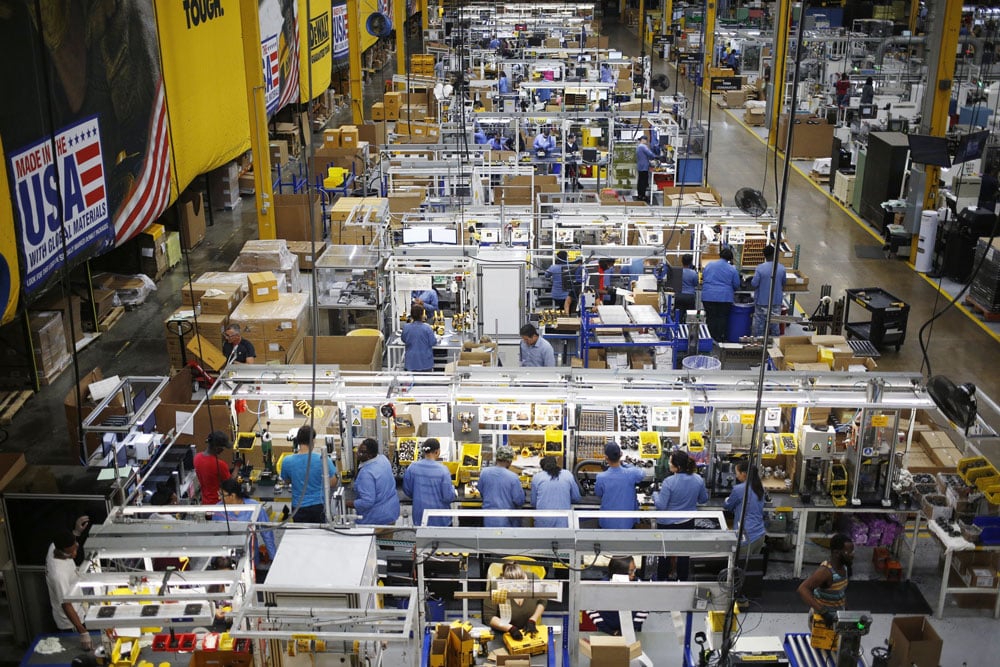If you’re leading HR or Operations in manufacturing and distribution, you already know the pain points—high turnover, disengaged workers, and a constant struggle to keep the line running smoothly. In this episode of Shift Talk, I sat down with Josh Drean, co-founder of the Work3 Institute and co-author of the upcoming book Employment is Dead, to get real about what’s not working in today’s workforce—and what you can do to retain your employees.
Josh isn’t shy about stating the employment model is broken. We’re talking about outdated practices that no longer serve anyone, especially in industries like manufacturing where flexibility and autonomy can seem like impossible goals. But here’s the thing: ignoring what your workers want—especially flexibility—will cost you. Big time.
The Problem: Outdated Work Models Aren’t Working
Let’s face it, the days of workers staying at a company for 30+ years are long gone. In manufacturing and distribution, the workforce is evolving, and they want more than just a paycheck. They’re looking for flexibility, ownership over their roles, and a work environment that actually respects their time and needs. And when they don’t get it? They leave.
Josh explains: the traditional model of clocking in and out, doing repetitive tasks without input or flexibility, just doesn’t fly anymore. And yet, so many companies are stuck in the past, thinking that if they offer a paycheck, workers should stick around. But that’s not enough to keep people engaged.
“If you can’t offer workers flexibility and ownership, why would they stay?” Josh asked during our conversation. He’s right. We’re in a time where gig jobs and alternative work models are offering exactly what your employees want—freedom and choice. If your company doesn’t offer it, they’ll find one that does.
The Flexibility Fear: It’s Time to Let Go
I get it. Flexibility can sound like a logistical nightmare, especially in an industry where you need people on the floor to keep things moving. The idea of letting workers choose their shifts or take more time off can feel like you’re losing control. But Josh made it clear: employees are going to take time off whether you offer flexibility or not. The difference is whether they’ll come back or not.
At MyWorkChoice, we’ve been running flexible workforce models for years, with 90 to 100 percent of shifts consistently filled. The result? Lower turnover, higher retention, and a workforce that’s engaged and reliable. This isn’t just a theory—it works. Flexibility doesn’t mean chaos. It means giving workers a sense of control and trust, which leads to loyalty.
Why Retention is About More Than Pay
Sure, pay matters, but it’s not the only thing keeping workers on the line. Josh explained how disengagement is a massive issue right now, especially in industries like manufacturing. Workers are burnt out, fed up with rigid schedules, and frustrated by a lack of support from leadership.
In manufacturing and distribution, where every minute counts, companies can’t afford to lose good workers. Yet, without offering flexibility or autonomy, that’s exactly what’s happening. According to Josh, the companies that will win are the ones that can move away from old-school management tactics and start offering more than just a paycheck.
The Future of Work: Flexibility is Non-Negotiable
Josh isn’t just talking about the future of work in some abstract way—he’s pointing out real, tangible shifts (pun intended) that are happening right now.
For HR and Ops leaders, this isn’t just a trend to watch. It’s an urgent call to action. The future of work is here, and if you’re not offering flexibility and autonomy, you’re going to lose out to companies—or even gig platforms—that are.
Reid Hoffman, co-founder of LinkedIn, recently predicted that the traditional jobs will be obsolete by 2034. That might seem far off, but the reality is that workers are already choosing flexibility over traditional roles. The companies that embrace this shift now will have a clear advantage when it comes to retention.
What Can You Do? Practical Steps for Retention
So, what can you actually do to stop the turnover and keep your best people? Here are some practical step to meeting workers where they are:
- Offer Flexible Scheduling: Workers want control over their time. At MyWorkChoice, we’ve built our model around giving employees the flexibility to choose their shifts, and we’ve seen retention rates skyrocket because of it. If you think flexibility won’t work in manufacturing, think again. It’s not just possible—it’s necessary.
- Engage with Real Feedback: Stop relying on annual surveys that don’t go anywhere. Workers are giving you real-time feedback—whether it’s on TikTok or the shop floor. Listen to them, act on it, and create a work environment that makes them want to stay.
- Build a Culture of Trust: Workers will show up for you if they feel valued and trusted. Micromanagement, rigid schedules, and lack of autonomy lead to burnout. Give them room to grow, and they’ll reward you with loyalty.
- Prioritize Fair Pay—but Don’t Stop There: Yes, competitive wages are essential, but they’re not the only answer. Workers are looking for more—they want purpose, respect, and the ability to have a say in how they work.
Connect with Josh Drean
About the Shift Talk Podcast
Shift Talk, is a podcast by MyWorkChoice where we talk about the real shift happening and hard conversations because we know the stakes are high in manufacturing and distribution. Your workforce is your most valuable asset, and without retention, you’re stuck in a cycle of hiring and losing people. It doesn’t have to be that way.





